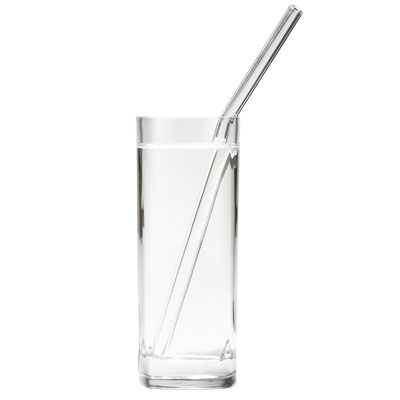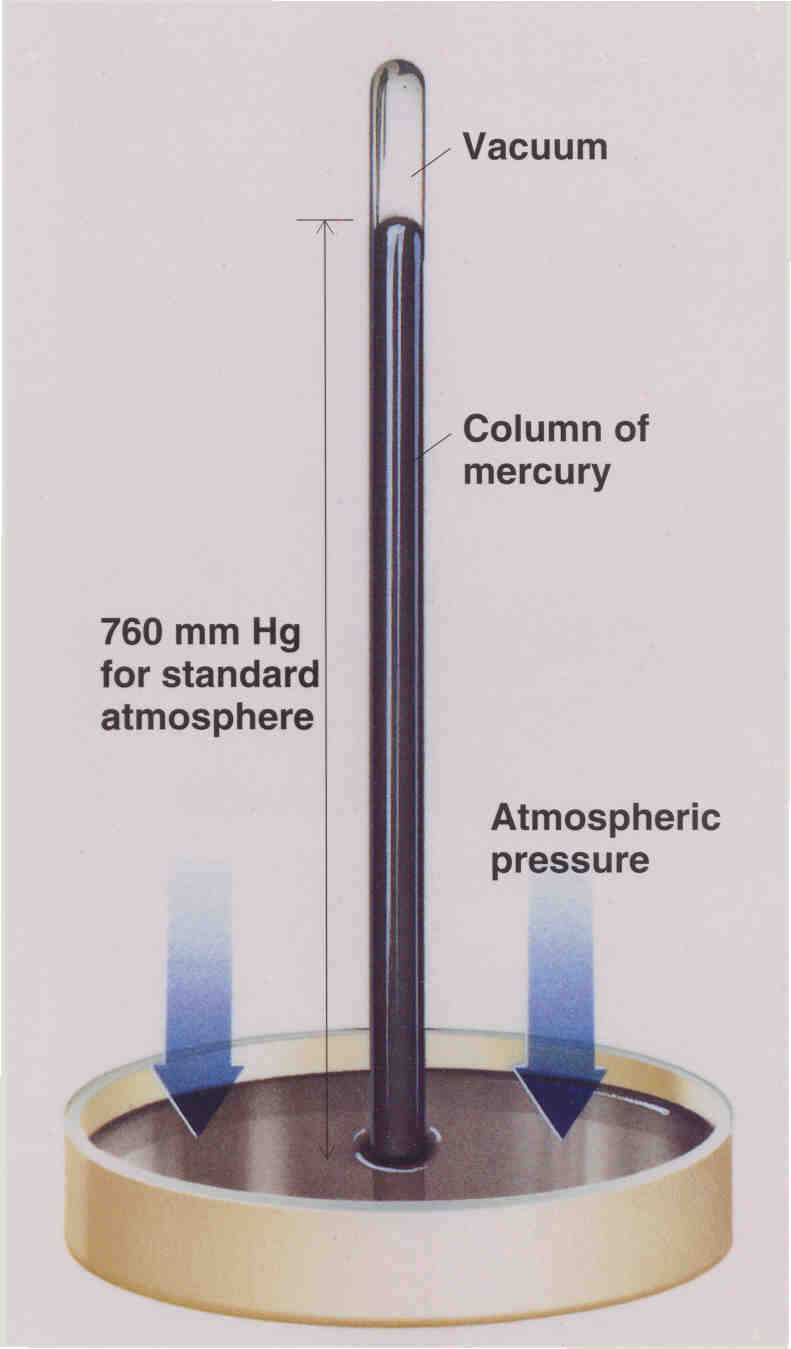Physicist: About the same thing that happens to a straw in a glass of water: the water level in the straw evens out with the water level outside.

The pressure at the bottom of the straw “tells” the water in the straw how high to climb. That same pressure “tells” the rest of the water the exact same thing.
A tube from the ground to space would fill with air of about the same density and pressure as the air around the straw, decreasing as you go up until eventually you have a straw full of nothing surrounded by also nothing (in space).
What holds the atmosphere to the planet is gravity, so if a patch of air tries to drift off into space it literally falls back. A straw alone wouldn’t change that. On the other hand, if you attached some kind of pump to the bottom of the straw to make it have a higher pressure than sea-level, then you could pump air up the straw and have some kind of massive space-fountain of air (the air coming out would fall back to Earth just like water in an ordinary fountain). In fact! There is a situation very close to that happening on Saturn’s moon, Enceladus.

The water-vapor geysers of Enceladus shoot directly into space. Most of it falls back onto the ground, but a tiny amount ends up orbiting Saturn and contributing to one of its rings.
Whenever air or water or whatever travels up a straw it’s being pushed by pressure from the bottom (there’s no such thing as sucking), and one atmosphere of pressure can only push so far. For something like liquid mercury that’s about 76cm, which is why the “1 atmosphere” of pressure is often expressed as “760mm of Mercury”. If a closed tube is taller than that, then the pressure (here on Earth) isn’t great enough to push the mercury to the top which leaves nothing at the top.
Same idea with air. If you have a long tube full of air with the top open to space and the bottom pressurized to one atmosphere (or 760mm Hg), then the column of air in the tube will be as tall as the atmosphere.
A straw doesn’t provide an “escape route”; our air is free to try to leave whenever. The atmosphere stays where it is because it’s made of mass and the Earth has gravity. It’s a little sobering to realize that there’s nothing between you and a profound nothing (space) but a thin layer of air held down by its own unimpressive weight.
The barometer picture is from here.








Thank you for the input. Your items are always interesting.
I’m not sure I agree with our house physicist’s answer here. The air in our atmosphere is not like the water in a glass, it’s far more dynamic.
I suspect that during the day, the sunlight striking the straw would cause the air inside to heat up, more so than the surrounding air, much like it does in a greenhouse. The warmer air would expand becoming relatively less dense than the surrounding air and would rise up the straw. As it rose, more air would rush in at the bottom to replace it, creating an upward convection current. If the top of your straw was level with (or lower than) the top of our atmosphere, I imagine you would indeed create an ‘air fountain’.
If the top of the straw was within our upper atmosphere, you could get an even stronger upward current thanks to the venturi effect. The upper atmosphere is much windier than the lower atmosphere, so wind passing over the top of your straw would (putting it simply) ‘suck’ more air up out of it.
Incidentally, have you ever wondered why tall buildings always have rotating doors? This is to stop the ‘chimney effect’. Try opening the emergency door next to it and regardless of the wind direction, air will tend to rush into the building, up the lift shaft and out of the upper windows. It does so because of convection caused by indoor air being warmer than outside air, and venturi effect if it’s windy at the top.
I like your straw idea. It poses certain engineering problems, but with a fan turbine attached could be an excellent source of free green energy.
I guess now we have to start building a massive straw to see who’s right…
So I guess that we don’t need to fear the mega-maid from the sci-fi (comedy) “Spaceballs”.
On another point, I guess you wouldn’t be able to create suction to suck up CO2 from say Venus, and create a moon made from frozen CO2 with enough mass to orbit Venus?
Or simply take out the CO2 from metropolitan cities around the Earth?
I agree with the philosophy evolved.
As humans we have created many devices and technology, to change this would be alien.
We rely on what we have used in the past, rockets and fuel, when we ignore the natural planet, which consists of water air and soil.
Why not built a massive glass, bearing in mind it would be protected from the sun, it could create a whole new dimension of space travel.
All of this is good stuff, I came across this when a question popped into my head while I was falling asleep. What would happen if I had big pipe, extended far beyond the atmosphere, and I used a pump to suck air out through the bottom? I’m dumbfounded that I found this post, but most interesting aspect of this scenario you guys didn’t discuss. Please send me an email with explanatiin if you know. Does space press down on us or does it suck ? Vladdtv@Gmail.com
Hi, science teaches us that liquids and gases move from a high pressure zone to a zone of lower pressure, that pressure decreases as altitude increases and that temperature decreases as altitude increases. Gasses inside the pipe that rise up from Earth would condense at some point as it gets colder. The condensation will cause the gasses to become heavier and to fall back downwards . Thus it would seem that the pipe leading from earth into space has to be coated with some material akin to solar panels to keep it and the gasses inside it warmer than the surrounding air (and later, the surrounding space). This difference in temperature should cause the gas from earth to move upwards and should also prevent the gas from condensing as it moves upwards. There should be strong valves and mechanisms in place at the lower end of the pipe to prevent our atmosphere in its entirety from being drained into space and to isolate and seal off the pollutant gasses into the piped system. Just a basic idea.
ITS TRUE!!! The moon symbolizes the end of the straw of which we are all stuck in!!!
“If I have an atmosphere, and you have an atmosphere, and I have a straw…”
You’d need to take the straw to space first, then close each end of the straw to save a vacuum, then drop one end of the straw from space to earth. Then when you pull off each end lower pressure from the surface would rush towards space slowly killing everyone
If we have a vacuum inside of the straw then the atmosphere will crush the straw, unless we make it out of heavyweight materials but then the weight of the straw will be so much the nothing can hold it up in the air.
sounds like a great theory, i also had this though without expecting to stumble across this. would venting some of earths excess or pollutant gases lead to global cooling and cleaner/breathable air? are there any ramifications of leaving liquid co2 or other gases floating around our solar system (e.g. if hydrogen/methane/O2 gravitated toward the sun)? could they potentially form a micro nebula if remaining in a gaseous state?